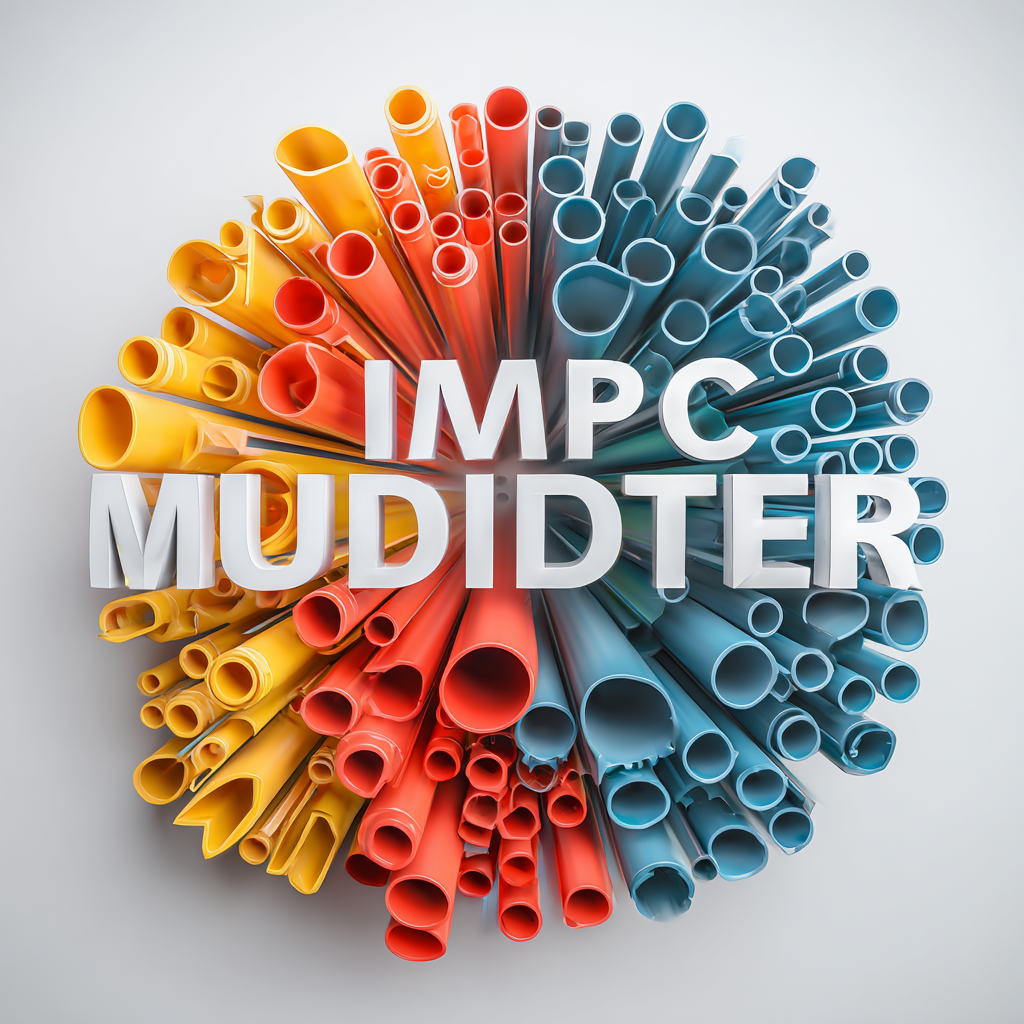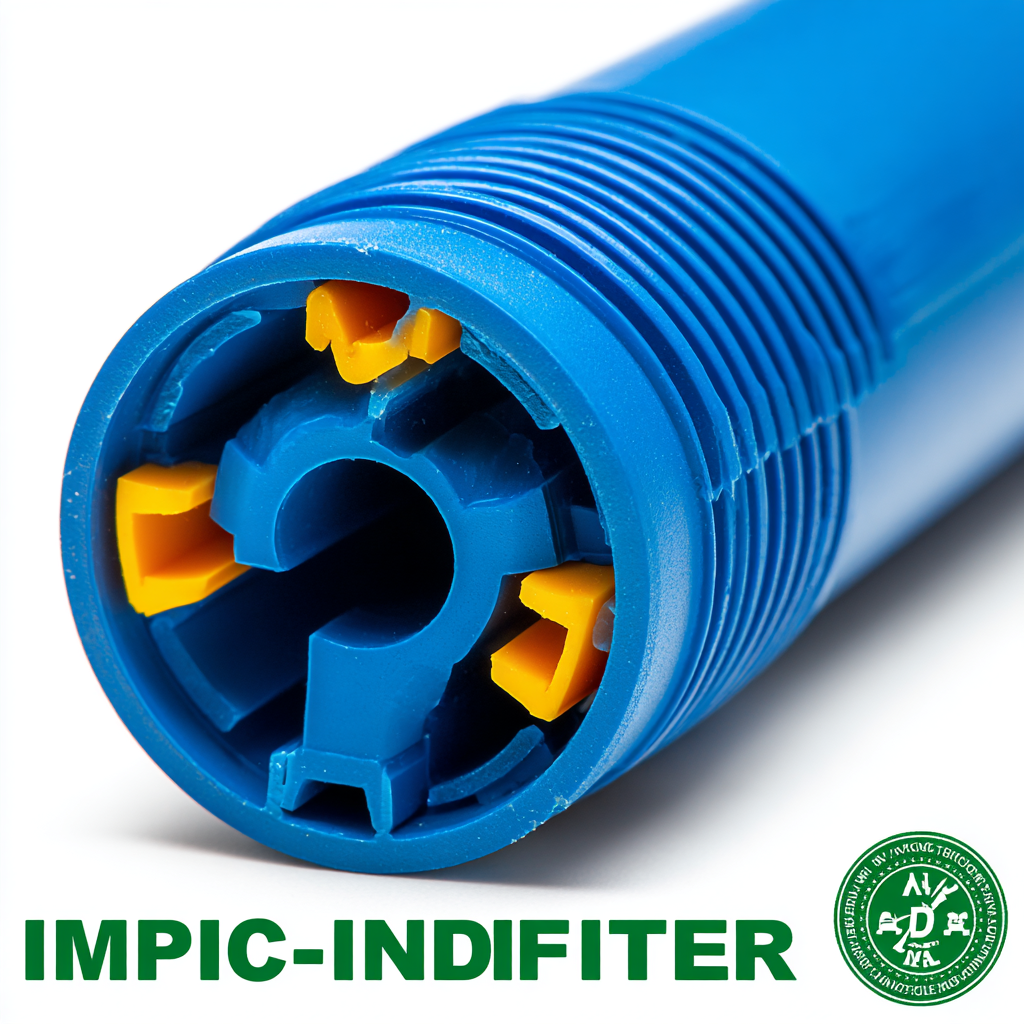
How to Choose the Best Impact Modifier for PVC Pipes in 2025 Technology Trends
In the ever-evolving landscape of the PVC industry, selecting the right Impact Modifier for PVC Pipes has become paramount, particularly as we look toward the advancements anticipated in 2025. According to a recent report by the American Chemistry Council, the demand for durable and flexible PVC products is expected to rise by 4.5% annually, driven by the increasing applications in construction and plumbing. This trend underscores the critical role that impact modifiers play in enhancing the mechanical properties of PVC pipes, rendering them more resilient to environmental stresses.

As manufacturers seek to optimize their formulations, understanding the various types of impact modifiers and their specific benefits is essential. In this blog, we will explore the top strategies for choosing the best impact modifier for PVC pipes, ensuring compliance with future technological trends and industry standards.
Understanding the Role of Impact Modifiers in PVC Pipe Performance
Impact modifiers are crucial additives that enhance the performance of PVC pipes, making them more resilient against harsh conditions. They work by improving the elasticity and toughness of the material, allowing pipes to withstand sudden impacts or extreme temperatures without cracking or breaking. As technology advances, the selection of the right impact modifier becomes increasingly essential for ensuring reliable and long-lasting PVC pipe solutions.
Tips for Selecting Impact Modifiers: Consider the Environment
When choosing an impact modifier, examine the environmental factors the pipes will be exposed to. For instance, in colder climates, a modifier that enhances low-temperature flexibility is crucial. Similarly, if pipes will be used in high-stress applications, opt for modifiers that provide superior toughness.
Tips for Evaluating Performance
Always test different impact modifiers in small batches to assess their impact on the final product's performance. Look for consistency in results, as variations can affect durability. Collaborating with experienced suppliers who understand the latest advancements in impact modifiers can also guide you towards the best options available in the market.
Key Considerations for Selecting Impact Modifiers in 2025
When selecting the best impact modifier for PVC pipes in 2025, key considerations revolve around performance, compatibility, and environmental impact. Recent industry reports indicate that the demand for high-performance PVC pipes is projected to grow at a CAGR of 4.6% through 2025. This growth drives innovations in impact modifiers, which enhance toughness and flexibility in application. Understanding the specific mechanical properties required for your project is crucial; materials with better elongation and tensile strength can significantly improve the durability of PVC pipes in extreme conditions.
Another critical aspect is the compatibility of the chosen impact modifier with PVC formulations. As highlighted in recent studies, such as those examining monoclonal antibodies, the importance of a well-matched formulation cannot be overstated. The modifier must integrate seamlessly with the base resin to avoid issues like phase separation or poor mechanical performance. Environmental sustainability is also increasingly a priority, with many manufacturers exploring bio-based impact modifiers. As the industry shifts towards greener solutions, selecting modifiers that meet both performance standards and environmental regulations will be essential to future-proof your PVC products in a competitive market.
How to Choose the Best Impact Modifier for PVC Pipes in 2025 Technology Trends
| Impact Modifier Type | Key Features | Typical Applications | Performance Metrics | Cost Range (per kg) |
|---|---|---|---|---|
| Acrylo Butadiene Styrene (ABS) | Excellent impact resistance, chemical stability | Pipes, fittings, outdoor applications | Tensile strength: 25 MPa, Elongation: 50% | $2.00 - $4.50 |
| Ethylene Propylene Diene Monomer (EPDM) | Good weather resistance, flexibility | Flexible pipes, irrigation systems | Hardness: 60 Shore A, Tensile strength: 15 MPa | $1.50 - $3.00 |
| Styrene Ethylene Butylene Styrene (SEBS) | Excellent impact resistance, UV stability | Construction, automotive components | Impact strength: 30 kJ/m2, Elongation: 400% | $3.00 - $5.50 |
| Chlorinated Polyvinyl Chloride (CPVC) | Higher temperature tolerance, good longevity | Hot water pipes, industrial applications | Heat distortion temperature: 90°C, Tensile strength: 50 MPa | $2.50 - $4.00 |
| Polybutylene (PB) | High ductility, resistance to corrosion | Water supply pipes, heating systems | Tensile strength: 37 MPa, Elongation: 600% | $1.80 - $3.80 |
Evaluating Different Types of Impact Modifiers for PVC Applications
When selecting the best impact modifier for PVC pipes, understanding the various types available is crucial for ensuring optimal performance in diverse applications. Two predominant types of impact modifiers are processing aids and toughening agents. Processing aids, like organo-modified clays, enhance the flow properties of PVC during manufacturing without significantly altering the final product’s mechanical properties. These aids can improve the efficiency of pipe production, reduce energy consumption, and yield smoother finishes.
On the other hand, toughening agents, such as acrylic or rubber-based modifiers, play a vital role in enhancing the impact resistance of PVC pipes. These modifiers absorb energy during impact, thereby minimizing the likelihood of cracking or breaking in harsh environments. As the demand for durable and reliable PVC applications grows, evaluating the specific needs of your project—like temperature resistance, chemical exposure, and mechanical strength—will guide you in choosing the right impact modifier. Recent technology trends are pushing for more sustainable and efficient modifiers, making it even more important to stay informed about the latest advancements in material science.
Impact Modifiers Performance for PVC Pipes in 2025
Emerging Technologies in Impact Modification for Enhanced PVC Durability
As the demand for high-performance PVC pipes continues to grow, innovative approaches in impact modification are becoming essential. Emerging technologies are concentrating on enhancing the durability and resilience of PVC materials, pivotal for applications in construction, plumbing, and infrastructure. Recent advancements include the integration of nanomaterials and advanced polymer blends that significantly improve the mechanical properties of PVC, making pipes more resistant to impact and environmental stressors.

When selecting an impact modifier for PVC pipes, consider the following tips. First, evaluate the modifier’s compatibility with PVC to ensure optimal adhesion and performance. Secondly, assess the impact modifier's effectiveness under various temperatures and conditions to guarantee reliability over time. Lastly, check for environmental certifications that indicate sustainability, not only improving product performance but also meeting the growing demand for eco-friendly solutions.
As technology continues to evolve, keeping an eye on these emerging trends will be crucial. Innovations such as bio-based modifiers and smart polymers promise to elevate the standards for PVC pipe applications, leading to longer-lasting and more sustainable infrastructure solutions.
Sustainability Trends in Impact Modifiers: What You Need to Know
Sustainability has emerged as a driving force in the development of impact modifiers for PVC pipes, especially as we move towards 2025. Consumers and manufacturers alike are increasingly prioritizing eco-friendly materials and production methods. As traditional impact modifiers often rely on non-renewable resources or harmful additives, the industry is witnessing a significant shift towards bio-based and recyclable alternatives. These sustainable options not only reduce the environmental footprint but also enhance the overall performance of PVC pipes, ensuring they meet modern durability and flexibility requirements while being kinder to the planet.
Moreover, innovations in material technology are paving the way for the creation of impact modifiers that align with circular economy principles. For instance, advancements in polymer blends and compatibilizers are enabling the recycling of PVC pipes with minimal loss of quality. This trend not only conserves resources but also creates new economic opportunities in the recycling sector. As manufacturers adopt these sustainable impact modifiers, they are not only enhancing the longevity and usability of their products but also contributing to a more sustainable future, making it crucial for stakeholders to stay informed about these evolving trends in 2025.


